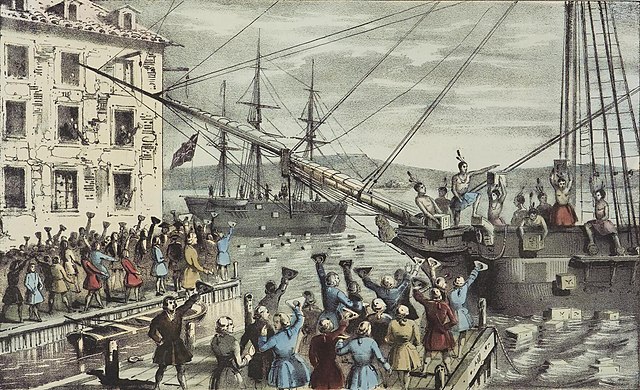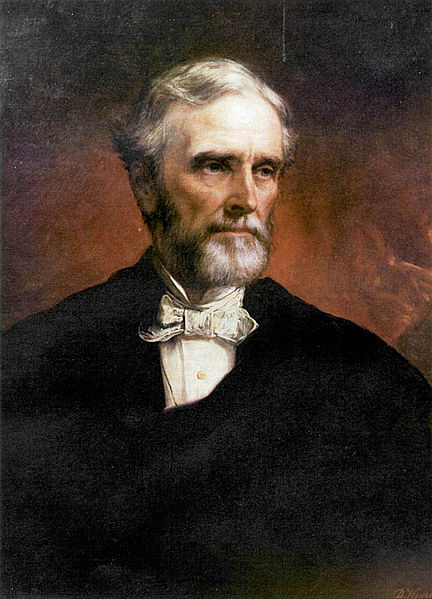February 9th is a day that has witnessed a wide array of significant events throughout history, encompassing breakthroughs, conflicts, and monumental decisions across the globe.
From critical turning points in politics and warfare to landmark achievements in culture and science, this date encapsulates the diverse and dynamic course of human history.
As we explore the milestones of February 9th, we’re reminded of humanity’s capacity for both creation and destruction, and the continuous pursuit of progress and understanding.
February 9th Events in History
474 – Zeno was crowned as co-emperor of the Byzantine Empire
On February 9, 474, Flavius Zeno was crowned as the co-emperor of the Byzantine Empire alongside his son Leo II. This occurred during a period marked by internal strife and external invasions within the empire.
Zeno’s rise to power was significant because he was of Isaurian origin, a region in Anatolia, which was somewhat unusual for a Byzantine emperor.
Also Read: February 8 – On this Day in History
His reign, which would later become solo after the death of Leo II, was characterized by efforts to deal with various military threats and internal rebellions.
1555 – Bishop of Gloucester John Hooper is burned at the stake
John Hooper, an English churchman and the Bishop of Gloucester, was burned at the stake on February 9, 1555. He was a prominent Protestant reformer during the English Reformation and was executed for heresy under the Marian persecutions.
Also Read: February 10th Events in History
His death is one of the most well-known examples of the persecution of Protestants during the reign of Mary I of England, known as “Bloody Mary” for her efforts to restore Catholicism in England after the reign of her Protestant half-brother, Edward VI.

1775 – The British Parliament declares Massachusetts in rebellion
On February 9, 1775, the British Parliament declared that the colony of Massachusetts was in a state of rebellion. This declaration was a response to the growing unrest and protests in the American colonies, particularly the events such as the Boston Tea Party.
This action by the British government escalated tensions between Great Britain and its American colonies, contributing to the outbreak of the American Revolutionary War later that year.
1825 – The House of Representatives elects John Quincy Adams as President of the United States, after no candidate received a majority of electoral votes
After the presidential election of 1824 failed to produce a winner with a majority of electoral votes, the decision was thrown to the House of Representatives, as dictated by the Constitution.
On February 9, 1825, John Quincy Adams was elected President of the United States by the House. This election is notable for being the first and only time the presidency was decided by the House of Representatives.
The election was marked by claims of a “corrupt bargain” when Adams, who had secured fewer electoral and popular votes than Andrew Jackson, appointed Henry Clay as his Secretary of State after Clay supported Adams’ bid in the House.
1861 – Jefferson Davis is elected the Provisional President of the Confederate States of America by the Confederate Convention at Montgomery, Alabama
Jefferson Davis was elected as the Provisional President of the Confederate States of America by the Confederate Convention in Montgomery, Alabama, on February 9, 1861.
This election came after seven Southern states seceded from the Union following the election of Abraham Lincoln, a Republican who was opposed to the expansion of slavery.
Davis’s presidency and the formation of the Confederacy were pivotal events that led to the American Civil War, as they represented the most direct challenge to the authority of the United States government.

1870 – The U.S. Weather Bureau (now the National Weather Service) was established
On February 9, 1870, President Ulysses S. Grant signed a joint Congressional resolution that established the National Weather Service, originally known as the United States Weather Bureau. The resolution tasked the agency with providing weather forecasts and warnings to help protect life and property and to benefit the economy.
It was initially part of the United States Army Signal Corps and later transferred to the Department of Agriculture and then to the Department of Commerce.
The establishment of the Weather Bureau marked a significant advancement in the scientific approach to weather forecasting and meteorology in the United States.
1889 – President Grover Cleveland signs a bill admitting North Dakota, South Dakota, Montana, and Washington as U.S. states
President Grover Cleveland signed a bill on February 9, 1889, that enabled North Dakota, South Dakota, Montana, and Washington to draft constitutions and seek admission to the Union.
This legislation was part of the broader wave of western expansion and statehood in the United States during the late 19th century.
The admission of these states later in the same year significantly expanded the geographic and political landscape of the United States, contributing to its growth as a nation spanning from the Atlantic to the Pacific.
1900 – Dwight F. Davis creates the Davis Cup tennis competition
The Davis Cup, one of the most prestigious tournaments in men’s tennis, was conceived by Dwight F. Davis on February 9, 1900. Davis, who was then a student and tennis player at Harvard University, designed the tournament as a competition between the United States and Great Britain.
He personally purchased a silver trophy bowl as the prize for the competition, which later became known as the Davis Cup. The tournament has since grown to include teams from nations around the world, becoming a cornerstone event in international tennis.
1920 – Under the Treaty of Versailles, Germany is required to pay reparations for World War I damages
As part of the Treaty of Versailles, signed in 1919 to formally end World War I, Germany was required to pay reparations for the damages caused during the conflict. On February 9, 1920, the Allied powers presented Germany with a schedule for these reparations.
The demands were extraordinarily high, leading to significant economic and political instability in Germany. The reparations were a contentious issue, contributing to the rise of extremism and setting the stage for World War II.

1934 – The Balkan Entente is formed
The Balkan Entente was formed on February 9, 1934, by a treaty signed in Athens by Greece, Turkey, Romania, and Yugoslavia. This political and military alliance was aimed at safeguarding the territorial status quo in the region following the upheavals of the Balkan Wars and World War I.
It also sought to counter the emerging threat of Bulgarian revisionism and to prevent the resurgence of hostilities in the Balkans. The formation of the Balkan Entente illustrated the complexities of interwar diplomacy and the efforts of smaller states to secure their interests in a turbulent period.
1942 – World War II: Top United States military leaders hold their first formal meeting to discuss American military strategy in the war
In 1942, during World War II, top United States military leaders held their first formal meeting to discuss the American military strategy in the war.
This significant event marked a critical point in the U.S. involvement in World War II, following the attack on Pearl Harbor on December 7, 1941, which had led the United States to formally enter the conflict.
The meeting involved senior military officials from both the Army and the Navy. These officials were part of what would become known as the Joint Chiefs of Staff (JCS), an advisory body established to coordinate military policy and strategy among the different branches of the U.S. armed forces.
1950 – Senator Joseph McCarthy accuses the United States Department of State of being filled with Communists
On February 9, 1950, Senator Joseph McCarthy made a pivotal speech in Wheeling, West Virginia, where he claimed to have a list of “members of the Communist Party and members of a spy ring” within the United States Department of State.
This speech marked the beginning of what would become known as McCarthyism, a period characterized by intense anti-communist suspicion in the United States during the early Cold War.
McCarthy’s accusations led to a series of investigations and hearings aimed at rooting out supposed communist infiltration in the U.S. government and other sectors of American society. The era is remembered for its impact on freedom of expression and the political climate, as many individuals’ lives and careers were adversely affected by often baseless accusations.
1964 – The Beatles make their first appearance on The Ed Sullivan Show, performing before a “record-busting” audience of 73 million viewers across the USA
The Beatles made their historic first appearance on “The Ed Sullivan Show” on February 9, 1964, captivating an American television audience of about 73 million viewers. This performance is widely regarded as a pivotal moment in American pop culture and the history of rock ‘n’ roll.
It marked the beginning of “Beatlemania” in the United States, as the band performed several of their hits to a screaming, enthusiastic audience. The Beatles’ appearance not only helped them break into the American music scene but also had a lasting impact on the global music industry and youth culture.
1971 – Satchel Paige becomes the first Negro League player to be voted into the USA’s Baseball Hall of Fame
On February 9, 1971, Leroy “Satchel” Paige became the first Negro League player to be elected to the Baseball Hall of Fame. Paige was a legendary pitcher known for his remarkable longevity in the sport, his charismatic personality, and his incredible skill on the mound.
His induction into the Hall of Fame was a significant acknowledgment of the talent and contributions of Negro League players at a time when racial segregation had kept them out of Major League Baseball for decades.
Paige’s election helped pave the way for greater recognition of other Negro League stars and their place in the sport’s history.
1986 – Halley’s Comet last appeared in the inner Solar System
Halley’s Comet made its last appearance in the inner Solar System in 1986. This well-known short-period comet is visible from Earth approximately every 76 years, making it possible for a human to see it twice in their lifetime.
The comet has been recorded by astronomers since at least 240 BC, and its periodicity was first determined in 1705 by English astronomer Edmond Halley, after whom it is named.
The 1986 appearance was particularly notable because it allowed scientists to study the comet up close with spacecraft, including the European Space Agency’s Giotto mission, providing valuable data on the nature of comets.
1991 – Voters in Lithuania vote for independence from the Soviet Union in a non-binding referendum
On February 9, 1991, Lithuania held a referendum in which an overwhelming majority of participants voted in favor of independence from the Soviet Union. This vote was a significant step in the Baltic state’s push for sovereignty, coming less than a year after it had declared independence on March 11, 1990.
The referendum demonstrated the strong desire among Lithuanians to establish their own nation-state free from Soviet control, setting a precedent that would be followed by other Soviet republics.
Lithuania’s move towards independence was a key moment in the dissolution of the Soviet Union, highlighting the growing nationalist movements within its constituent republics.
1996 – The Irish Republican Army declares the end of its 18-month ceasefire and explodes a large bomb in London’s Canary Wharf, killing two people
On February 9, 1996, the Irish Republican Army (IRA) ended its 18-month ceasefire by detonating a large truck bomb in Canary Wharf, one of London’s major financial districts. The attack killed two people, injured over a hundred, and caused extensive property damage, marking a violent return to the IRA’s campaign for British withdrawal from Northern Ireland.
The ceasefire had been a hopeful pause during the Troubles, a complex conflict involving various nationalist and unionist groups. The bombing underscored the challenges facing the peace process in Northern Ireland, although it would eventually lead to renewed efforts to achieve a lasting settlement, culminating in the Good Friday Agreement of 1998.
2001 – The American submarine USS Greeneville accidentally strikes and sinks a Japanese fishing training vessel, killing nine people
The American submarine USS Greeneville accidentally struck and sank the Japanese fishing training vessel Ehime Maru off the coast of Hawaii on February 9, 2001. The collision resulted in the deaths of nine people, including four high school students.
The incident led to significant diplomatic tension between the United States and Japan. Investigations into the accident revealed that the submarine was performing an emergency surfacing maneuver as part of a demonstration for civilian visitors on board, raising questions about the appropriateness of such demonstrations.
The U.S. Navy took full responsibility for the tragedy, and efforts were made to recover the bodies and compensate the victims’ families.
2013 – A blizzard disrupts transportation and leaves hundreds of thousands of people without electricity in the Northeastern United States and parts of Canada
A massive blizzard hit the Northeastern United States and parts of Canada on February 9, 2013, causing widespread disruption. The storm brought heavy snowfall, strong winds, and coastal flooding, leading to power outages for hundreds of thousands of homes and businesses.
Transportation was severely affected, with flights cancelled, roads closed, and public transit systems shut down. The blizzard was one of the most significant winter storms to hit the region in years, highlighting the challenges of emergency preparedness and response in the face of severe weather conditions.
2018 – An ATR-72 aircraft crashes in Iran, killing all 65 people on board
An ATR-72 aircraft operated by Iran Aseman Airlines crashed in the Zagros Mountains in Iran on February 18, 2018, killing all 65 people on board. The plane was en route from Tehran to the city of Yasuj in southwestern Iran. Adverse weather conditions and challenging terrain complicated the rescue and recovery efforts.
The crash underscored ongoing concerns regarding aviation safety in Iran, attributed to aging fleets and the impact of international sanctions that have hindered the country’s ability to obtain modern aircraft and spare parts.
2020 – The COVID-19 outbreak is declared a global health emergency by the World Health Organization
On January 30, 2020, the World Health Organization (WHO) declared the outbreak of COVID-19, caused by the novel coronavirus SARS-CoV-2, a Public Health Emergency of International Concern.
By February 9, the virus had already caused significant concern worldwide due to its rapid spread and the increasing number of cases outside China, where the virus was first identified.
The declaration was a call to countries around the world to coordinate their response efforts to contain the virus, which would go on to cause a global pandemic affecting millions of people, disrupting economies, and changing the course of daily life across the globe.
